The Zastava M48 Mauser — there are many like it, but this one is mine!
Mausers are the gold standard for MILSURP rifles for many people, myself included. Sure, there are other great designs like the Swiss K31 and British SMLE, but no series of rifles has been more consistently excellent like the ones that are based on the Mauser 98 action. Sorry if that pisses off any Mosin-Nagant-o-philes out there, but it's a fact. I love my Mosins too, but the truth is that they're garbage next to any Mauser 98 variant in reasonable condition. I include the M1903 Springfield in that latter group since most of us know that the '03 action was essentially a Mauser copy. Mauser sued over it too but got sidetracked by a little dust-up known as World War I.
Here are some things to know about the Mauser M48 — in this episode of Weapon Crush Wednesday!
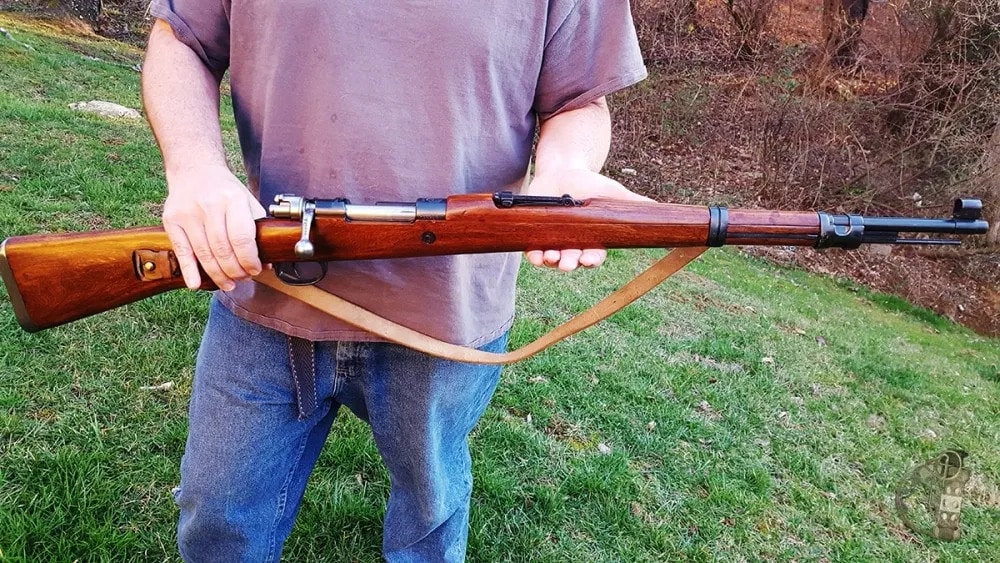
The M48 Mauser, Yugoslavian style
One of the best examples of the Mauser series was not manufactured in Germany, but in Yugoslavia in the late 1940s and 1950s. As part of the reparations Germany had to pay after World War II, Yugoslavia received tooling and equipment to make the Mauser 98, specifically the Karabiner 98 kurz (K98k or KAR 98) version which was the standard-issue infantry rifle for the Wehrmacht right through the end of the war. Even though the bolt action infantry rifle was pretty much obsolete by then, the Yugoslavians set up the Preduzece 44 facility (part of Zastava) to manufacture what became the M48 Mauser variant. Preduzece 44 was later known as the “Red Banner” plant.
You know, because communists.
What makes the M48 Mauser unique?
Specs
The M48 was not a carbon copy of the K98k, though there are similarities. The M48 is not quite an inch shorter in overall length, measuring 42.75 inches, with a 23.25-inch barrel compared to 23.62 inches for the K98k. The weight of both rifles can vary by a few ounces either way. The listed weight for the K98k is 8.2 to 9 pounds. The M48 is in the same range, with 8.6 pounds being the standard. According to my scale, my M48B comes in at 8.2 pounds unloaded.
Features
Several features of the rifles are different too. The upper handguard on the M48 covers the barrel all the way back to the receiver, while the K98k only goes back to the front edge of the rear sights. Maybe not a big deal, but the barrel gets damned hot after a few rounds and that extra protection is nice when handling the weapon after putting it through its paces. The rear sight gets hot too since it's mounted on the barrel through a slot in the upper handguard.
The bolt handle is curved at approximately an 45-degree angle, unlike the K98k, which is turned down at an angle sharp enough to prompt the need for a cutout in the stock to accommodate it. I admit it's a matter of personal preference, but I think the M48 is superior in this regard because it's easier to get a firm grip on the bolt handle. The handle is shaved flat on the underside, a feature I really like.
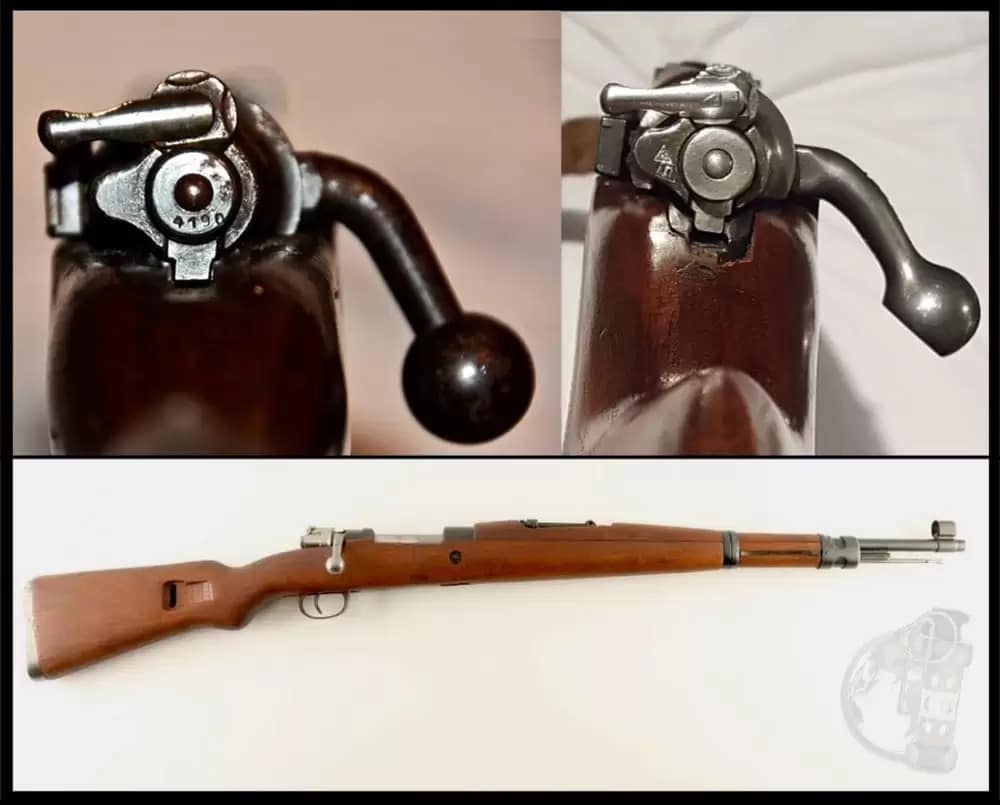
The most significant difference in the weapons is the length of the bolt itself, though it's only an eighth of an inch and there's no noticeable difference when cycling the two actions. The significance lies in that the two are not interchangeable, as are the standard size 98 bolts (subject to caliber, wear, and headspace). The M48 bolt is interchangeable with the earlier Serbian-produced M24 Mauser variant, which is also of the intermediate length. Again, interchangeability is subject to wear and headspace.
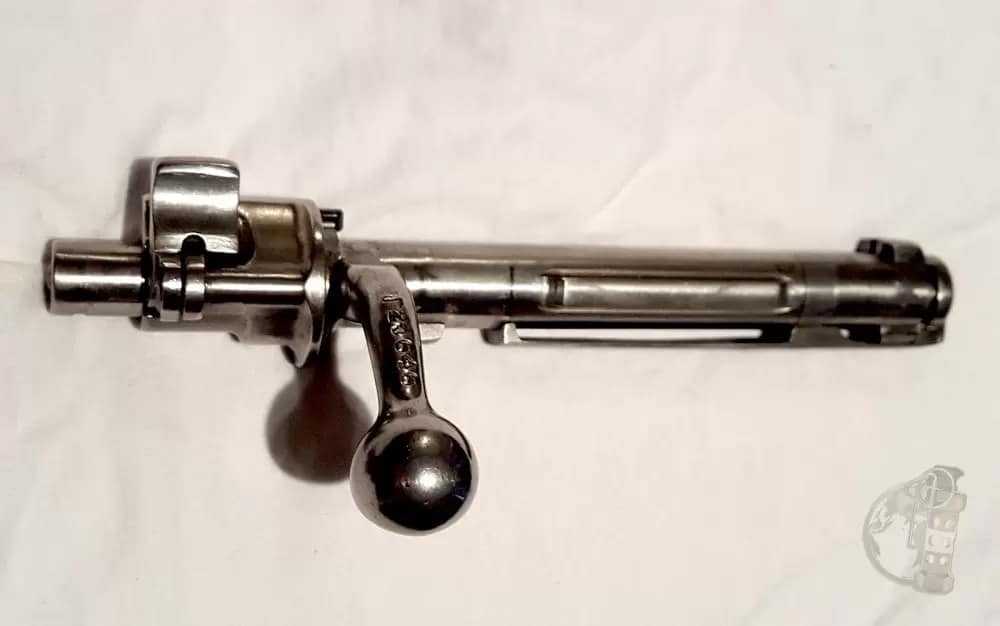
M48 Mauser Action
The action itself, along with quality manufacture, is the secret to the success of the Mauser. The product of years of development by Paul Mauser and his late brother Wilhelm, even today the 98 action may well be the apex of the bolt action rifle system. Paul Mauser's final version features two forward locking lugs, with a third lug in the rear designed as a final precaution against catastrophic failure. The action is so robust that, when produced with proper materials, it can handle 100,000 pounds of pressure and still remain operational. Of course, it couldn't withstand such pressures for long, and the standard World War II 8mm Mauser load exerted about 45,000 psi.
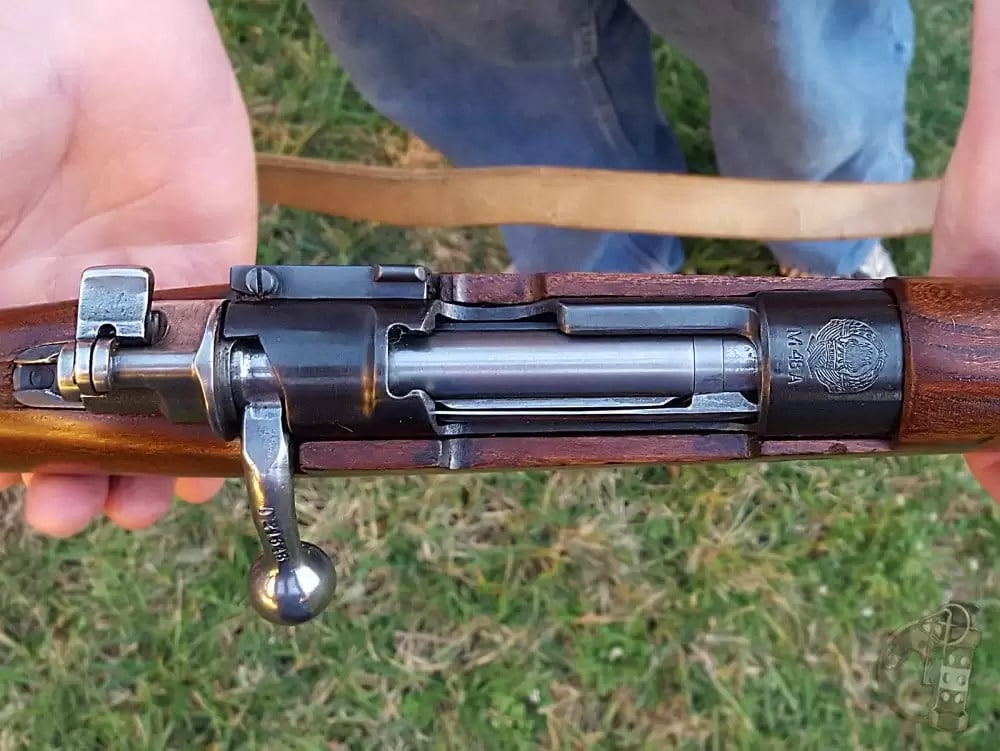

Safety mechanism
Other innovations of the Mauser 98 action are the powerful claw extractor, first developed in 1892, and the 18-pound mainspring driving the firing pin. One of the most recognizable features of the Mauser action is the three-position safety at the rear of the bolt. The first position, to the left, renders the rifle fully operational. The second position, straight up, disengages the trigger mechanism but allows the action to cycle, allowing for easy and safe unloading, or for the operator to safely remove the bolt for inspection or troubleshooting without unloading the rifle, which is useful in the field. The third position, to the right, disengages the trigger and locks the bolt entirely.
The safety is milled steel, very robust, highly visible, and easily operated. Modern high end Mauser hunting rifles still use the 98 action with a version of this safety mechanism. Another interesting feature of the action is the ability to decock the action without dry-firing the weapon. Lifting the handle cocks the bolt, but lowering the handle with the trigger pulled decocks it. This is a useful capability when cleaning or servicing the action.
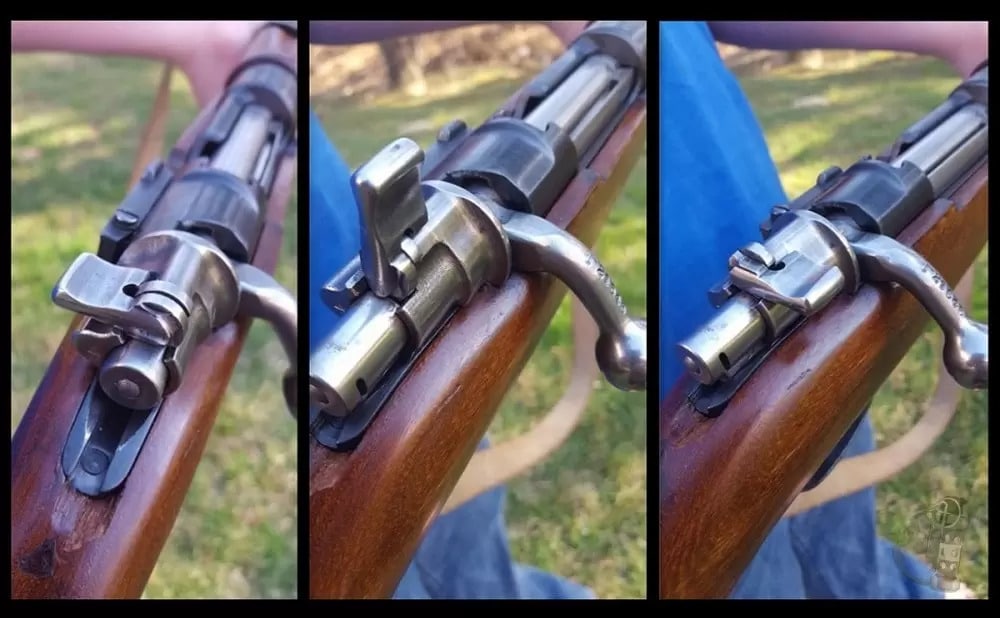
Loading a Yugo M48 Mauser magazine
The system features a five-round internal box magazine. Rounds can be loaded individually or by a stripper clip. I've seen reports that credit Paul Mauser with the invention of the stripper clip, but that doesn't appear to be the case. What is true is that Mauser greatly improved upon the design of the clips and the 98 system may be the first to allow the clip to be discarded simply by closing the bolt after loading the rounds. Unlike the K98k, the follower does not cause the bolt to lock open after firing the last round.

Pro tip! If you're going to be shooting an 8mm weapon, be wary of Turkish 8mm Mauser surplus.
Special markings that you'll find on an M48 Mauser
One thing MILSURP collectors (at least this one) love is the cool markings and features of these old warhorses. The M48 doesn't disappoint here, at least in the models prior to the M48BO. The receiver ring has the Yugoslav Crest, featuring the date 29 November, 1943, which was the day the communist Anti-Fascists reestablished the “Republic” of Yugoslavia. The weapon's model designation appears just below the seal and the Preduzece 44 stamp is on the left side of the receiver (shout out to my buddy Ben Sorensen for translating the Cyrillic script and tipping me to the date and its significance). Since so many went unissued, it's easy to find rifles with matching serial numbers on the receiver, bolt handle, magazine floorplate, and buttstock.
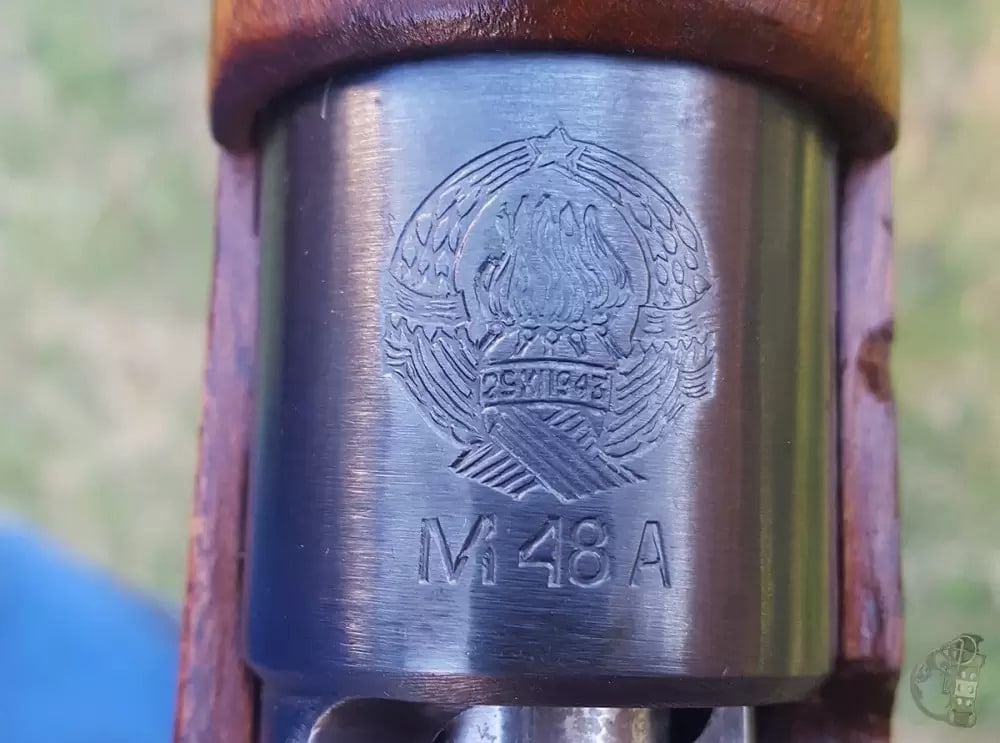
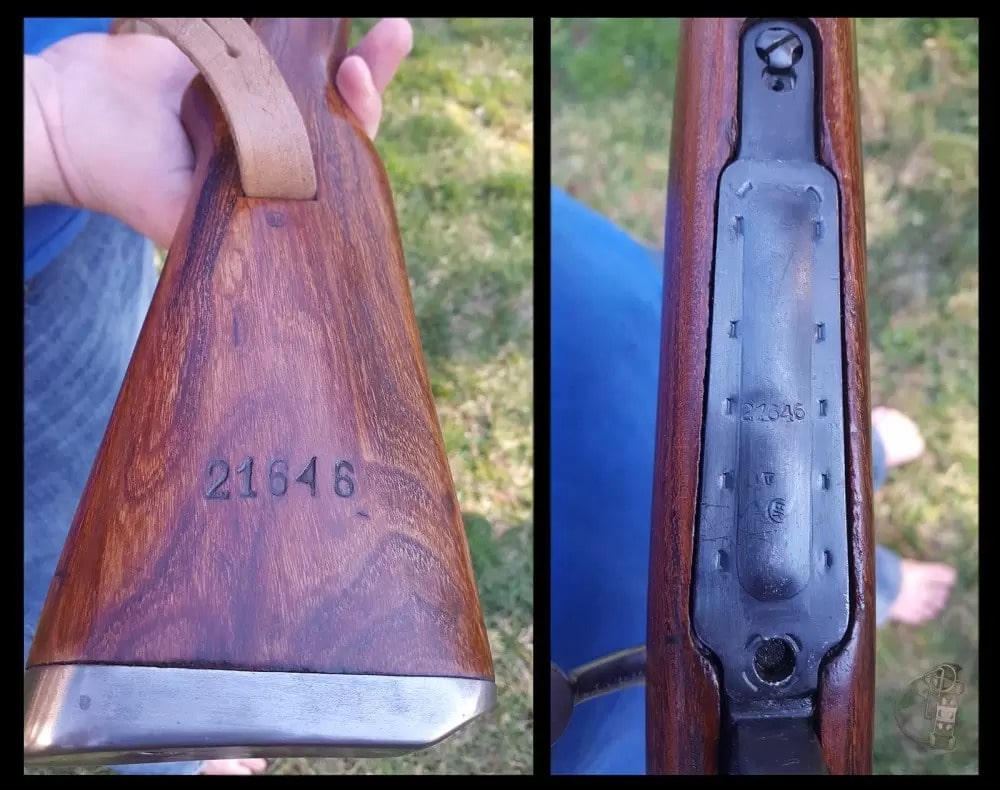
There are four basic versions of the M48 military rifle. The most desirable is the original M48. It's very well made with all milled parts and a nice, sturdy stock of elm, birch, beech, or walnut. There are some claims of the stocks being teak, but that's not true. Teak wasn't available, and importing it from Southeast Asia would have been uneconomical. Seems the rumor got started because some early imports looked like teak and no one bothered to check. Zastava has since confirmed that teak wasn't used. The other versions include the M48A, M48B, and M48BO.
Budgetary concerns led to the use of some stamped parts beginning with the M48A, which is discernable by the stamped magazine floor plate. The M48B has a stamped floor plate and barrel bands, as well as a stamped two-piece trigger guard. The problem here is that many of the M48Bs still have “M48A” stamped on the receiver ring underneath the cool Yugoslav crest. This is how mine is marked and I didn't realize it was an M48B until I started researching this article. These models are sometimes referred to as the “M48A-B.” The final version is the M48BO. It's essentially an M48B, but it doesn't have any national markings because it was designed solely for export.
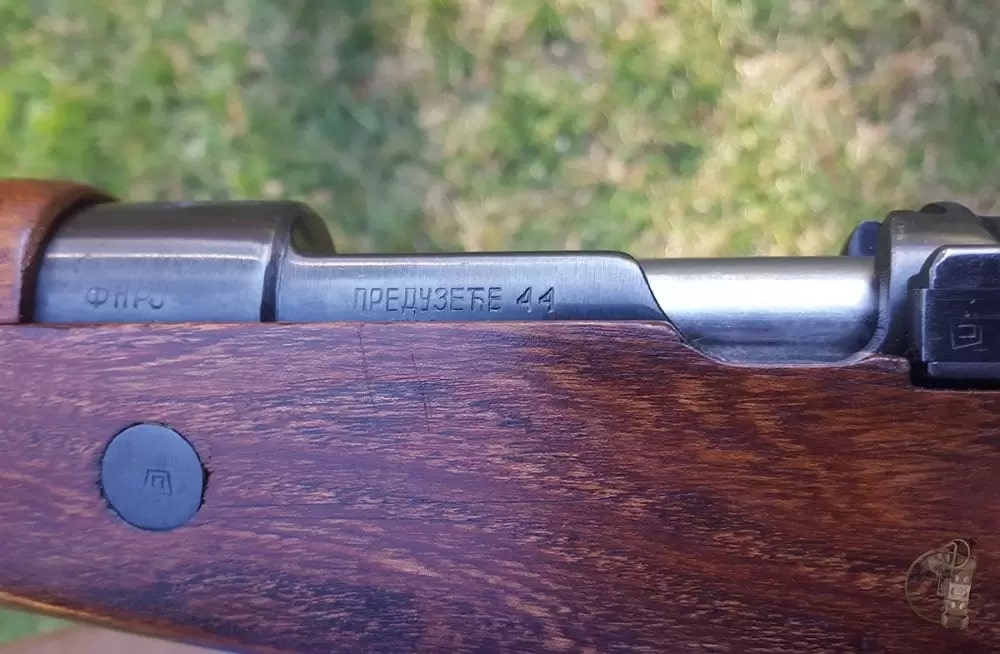
Zastava did manufacture a shorter-barreled sporting rifle based on the M48 known as the M48/63. It was discontinued in 2013. Some of these were marketed by a certain import firm, sometimes accused of doctoring MILSURPS to make them more desirable, as “Tanker Mausers.” They're nice rifles, but don't fall for the marketing that they were designed for or used by armored troops. Not that many here are likely to believe that nonsense.
M48 Mauser Ammo
The M48 is chambered for the 8mm Mauser (7.92x57mm) cartridge. Surplus ammo is still available, though the stocks are obviously finite. I couldn't find stats on all the surplus stuff, but I was able to determine that the muzzle velocity of standard World War II rounds was 2880 fps. The Shooter's Bible lists fourteen commercially-available loads by various manufacturers with an average muzzle velocity of 2451 fps and an average energy expenditure of 2463 ft/lbs. In my experience, the 8mm Mauser round compares favorably with my trusty 30.06 and I haven't hesitated to hunt deer and hogs with it.
M48 Mauser trigger
The trigger on the M48 is surprisingly good for a MILSURP. It's a two-stage setup with about a half-inch takeup before a clean break. Honestly, I like the trigger on mine better than any of my commercial hunting rifles. I can't compare it to a modern Mauser hunting rifle since the fund for that one is still being accumulated.
Sights on the M48 Mauser
The sights are typical of the time and adequate, if not great. They consist of a standard rear notch coupled with a hooded front post, which is theoretically adjustable for windage but in reality, is a pain in the ass. The hood protects it pretty well once you get it zeroed. The hooded front sight is nice, but the low profile of the rear notch can make fast acquisition less than efficient at times, especially in low light conditions. Like other MILSURP bolt rifles of the day, the rear sights are optimistic, ranging out to 2000 meters, though they oddly do not have a 100-meter setting and begin at 200 instead. The effective range of the weapon is about 500 meters, obviously dependent on load, light, and shooter competence. The low profile rear sights play a role here too, as longer-range targets are more difficult to see than they might be otherwise. This is not, nor is it meant to be, a precision weapon, though it's as accurate as you can expect any MILSURP to be. Some M48s were converted to fill the sniper role, but I have no experience with those or with any scoped version. Since my policy is to only write about weapons I have personally handled over a period of time, I'll provide a link if you want to read more about them.
Most M48s went unissued since they were quickly superseded by such Communist-bloc mainstays as the SKS and AK-47, though some have seen service in the Balkan civil wars. Still, the weapons were diligently maintained by the Yugoslavians, who pulled them out of storage on a rotating five-year basis, cleaned them, coated them in new cosmoline, and put them back. Because of this care, many are in good to excellent condition, with bright bores, smooth actions, and often beautiful stocks. The stock has a heavy, slightly concave, steel buttplate that gives it a little extra heft, but it's a sturdy SOB.

Side-mounted sling
Another unique feature of the later Mauser designs is the side-mounted sling. I don't know whether I like it or not. On one hand, it's mounted so that, while slung, the trigger guard or bolt handle doesn't dig into your back. Good deal, though I can't really say I've ever been bothered by that. On the other hand, when you're firing the rifle the sling doesn't hang straight down but rather sticks out to the left, sometimes getting in the way. It takes some getting used to. One solution is to tighten the sling as far as it will go, but that makes it impossible to shoulder unless you happen to be a skinny supermodel, which I most assuredly am not. Pick your poison, but neither one is a deal breaker for me since I use this rifle to hunt and blow holes in stuff at the range. The surplus slings I've found have been pieces of crap, but I got a nice new one from the fine folks at RTG Parts.
Final review
All told, my M48 is my favorite MILSURP rifle. The excellent condition, beautiful stock and, above all, the Mauser 98 action, make it a damned fine specimen. My Madsen M47 is close, but the Mauser action is the difference maker. About 1.2 million of these rifles were manufactured, though some models are more desirable than others, so they are readily available. Prices are in the $350.00 to $400.00 range. They aren't as collectible as the K98k, especially the earlier-produced rifles with Nazi markings, but the M48 matches its German cousin in quality and performance, and is generally in better condition. If MILSURP weapons are your thing, or if you just want a tough, high-quality bolt action rifle for not a lot of money, the Yugoslav M48 is hard to beat.

So, are we missing anything here? What's your favorite old school bolt gun? Hit us up in the comments below!
-Bucky
If you liked this piece about the M48 Mauser be interested to read about this historical firearm as well. Recognize it?

Read the original article in its entirety at breachbangclear.com.


